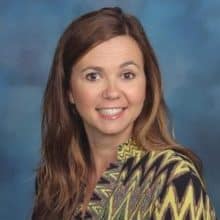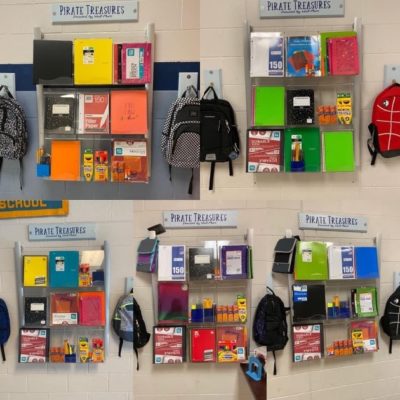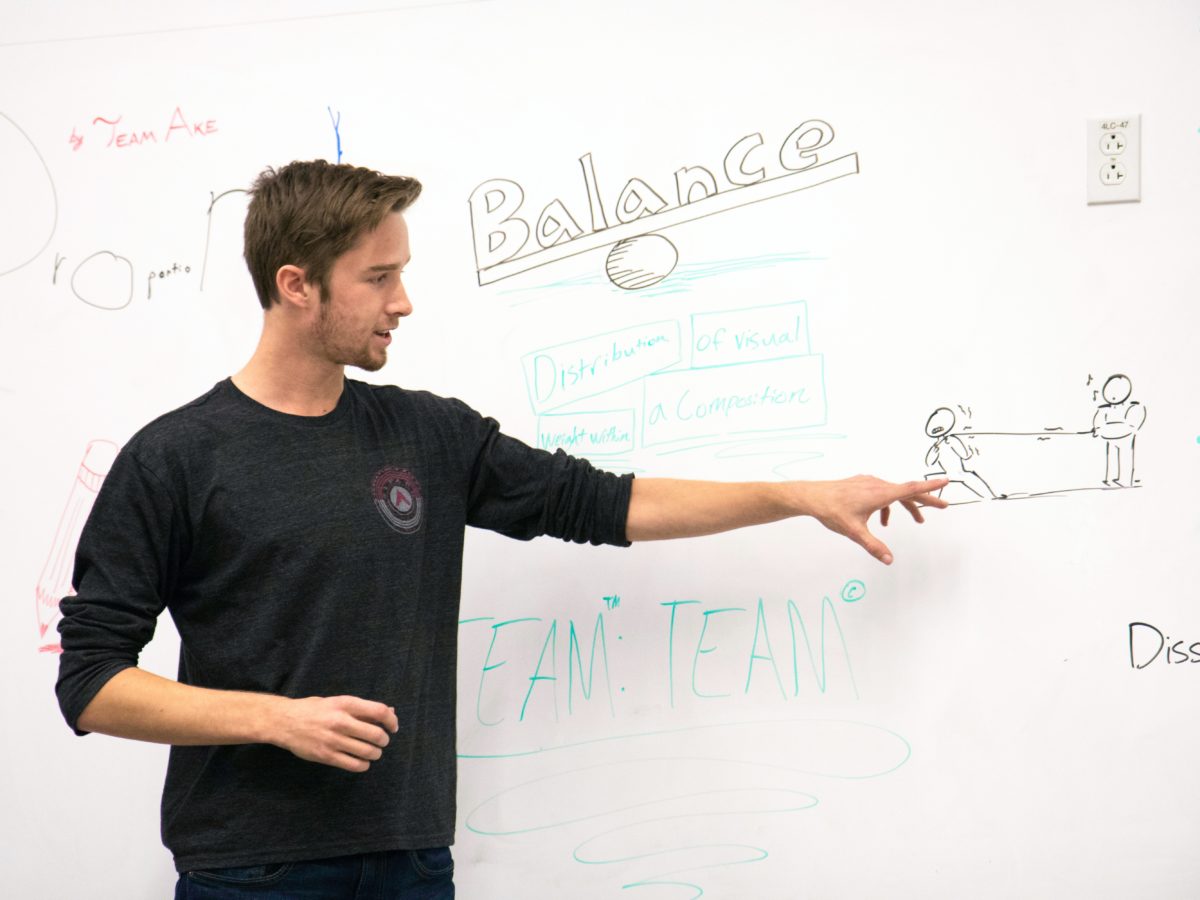
There are constant portrayals on social media and in the news of the teaching profession as arduous and unmanageable, only adding to the challenge of encouraging college students and young professionals to pursue a career in education. It is nearly impossible to find success stories and articles highlighting highly effective teachers who have perfected their craft and developed a pedagogy that can be replicated by colleagues.
I’d like to lift up recommendations from four highly-effective — and happy — teachers at Swansboro High School who all have discovered their own keys to effective teaching while maintaining a healthy work-life balance.
Teachers’ insights
When asking about student success and job satisfaction, educators Derek Geddes, an English teacher with 22 years of experience; Erica Wright, a math teacher with 11 years of experience; Jennifer Griffin, a biology teacher with 11 years of experience; and Doug Kidd, a math teacher with 28 years of experience; shared four strategies:
- Time management: The teachers all explained how they use their planning periods strategically to manage their workload and to protect their personal time. All four shared that they only spend between one and four hours per week outside of the normal workday (6:45 am – 2:45 pm) on school-related tasks. Their planning periods are spent grading, planning for the next day, reflecting on their practice, and collaborating with colleagues. They avoid checking and answering emails after school and prioritize their personal lives to ensure they have healthy work-life balances.
- Organizational strategies: The teachers shared their best practices to stay organized — checklists, spreadsheets, and the strategic use of resources. They recommended sticking to pacing calendars, using one location to house all resources such as OneNote or a spreadsheet, and understanding which resources maximize student learning.
Geddes takes advantage of a Turnitin, an online instructional program that allows him to record audio feedback to students on papers and conferences with students one-on-one during class, which is much more efficient than providing written feedback to 90 students. Kidd maintains a spreadsheet for each course that includes a day-by-day breakdown of standards, lessons, and links to resources. As part of his planning, he makes notes about what went well and what needs to be changed for the next semester. Wright creates a course booklet for each of her math classes that is printed in advance of the semester by the district print shop. This not only keeps her on track with pacing but also eliminates the need to spend her planning period running copies and for students to keep up with worksheets. Griffin uses Wakelet to house her resources for each unit and maintains notes about what went well and what needs to be modified — then reflects on those notes as she is planning for each unit, one to two weeks in advance.
All four teachers are also masters in utilizing online resources that include grading components. Their time is spent monitoring and transferring grades from the online resource to their gradebooks. Examples included IXL, Microsoft Forms, Study Island, Delta Math, and AP College Board. The strategic use of these resources to grade work allows them to spend precious class time providing feedback to students.
- Content competency: All four teachers are masters of their content. Content confidence is developed through experience, trial and error, and knowing what works and what needs to be scrapped. They all use student data, reflect on student growth, and are comfortable with discord. They embrace challenges and are flexible when needed, like throwing out an activity that did not work as planned or revisiting a concept that will take longer for students to master than originally planned.
- Management of instructional time and philosophy on homework: Geddes, Wright, and Kidd all maintain similar class balances of one third whole group or teaching, one third guided practice, and one third independent practice. Wright and Kidd typically start their classes with bell ringers and reviews. Teaching biology, Griffin explained that her classes are typically 100% collaborative in design.
All four only use homework for follow-up and reinforcement. Geddes does not waste class time with students reading in class and, instead, assigns reading a section that will be discussed the following day for homework. For math, homework is only the work that students did not finish during independent practice. That independent practice is usually comprised of 15 questions with about 30 minutes to complete it. Students only have homework if they did not finish the practice in class. Students in biology are only required to complete work they did not finish in class as homework.
Teaching is a great career and, as educators, we need to spend more time highlighting the successes and sharing the best practices of the masters in our profession — including what it looks like to maintain a healthy work-life balance.
Leaders’ lessons
For principals and district administrators, that means:
- Protecting time: We understand that teacher and substitute shortages have sacrificed protected planning time on many school campuses. Find alternatives to asking teachers to cover classes. If you must take a planning period, find a way to compensate for the sacrifice. Understand that you are immediately asking your teachers to sacrifice their personal time to complete the work that would have been completed during planning on their own time. Solutions may include developing relationships with substitute teachers, restructuring a position, or creative scheduling.
- Highlighting and investing in organizational strategies: Ensure that we are investing in programs and resources to make feedback and grading more efficient for teachers. Utilize professional development time to ensure teachers understand resources available and how to maximize them to make planning, instruction, and grading more manageable.
- Content competency, management of instructional time, and homework: Offer opportunities for novice teachers to observe master teachers and encourage time for collaboration and sharing of best practices. Facilitate time for teachers to discuss individual student growth and instructional struggles in professional learning communities (PLCs), with administration, and mentors.
- Coaching teachers: Help teachers identify areas that are challenging, such as use of resources or time management. Encourage teachers to dedicate time and energy to fine-tune practices that will make work tasks more manageable.
- Work-life balance expectations: Revisit your expectations for staff. Are you sending emails after hours? Are you expecting a response? Happy, balanced teachers produce happy, successful students. Model what you expect regarding a healthy work-life balance, and your teachers and staff will respond in kind.
Academics, community, and family: More about these educators
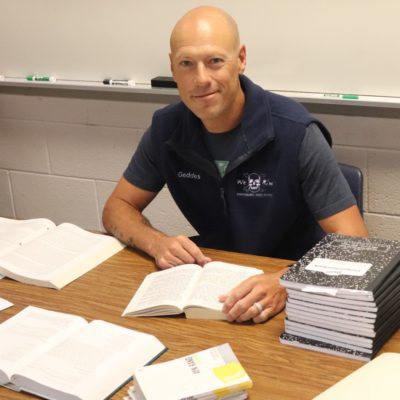
Derek Geddes is an English teacher with 22 years of experience with a rigorous course load, with both Honors and inclusion English 2 classes, as well as AP Literature. He consistently outperforms local and state growth measures as evidenced by North Carolina EVAAS projections, and 91% of his AP students received college credit for passing their exam. Geddes chairs our English department and coaches lacrosse and tennis. He also loves spending time with his family, on his boat, and in the kitchen.

Erica Wright is a math teacher with 11 years of experience. Wright teaches standard and inclusion Math 3 with large class sizes. She consistently outperforms local and state growth measures as measured by North Carolina EVAAS projections. Wright also coaches cheerleading and volunteers with a local theatre company as a part of their sound and lighting team. She loves spending time with her new husband and church family.
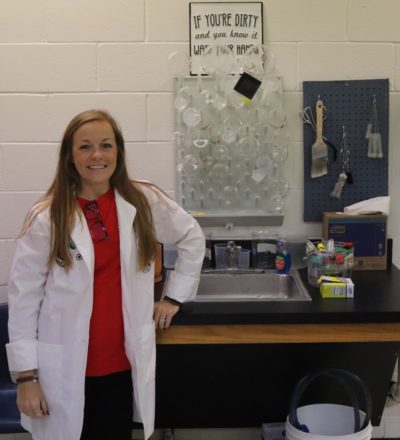
Jennifer Griffin is a biology teacher with 11 years of experience and teaches numerous sections of AP biology, as well as standard and honors biology. Griffin consistently outperforms local and state growth measures as evidenced by North Carolina EVAAS projections. She also leads the data team for the biology department and provides professional development at the local and state level. She manages our Refresh (student power hour) program and teaches part-time for N.C. State University. Griffin loves spending time with her family, working in her greenhouse, and sharing her passion for essential oils.
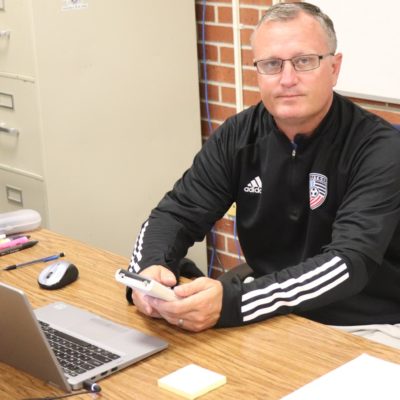
Doug Kidd is a math teacher with 28 years of experience and teaches a challenging course load that includes Math 2 and Math 3 classes. Kidd teaches the Math 3 students who are identified as being on the accelerated pathway for mathematics — the students who have historically scored in the 95th percentile and are expected to still grow for the school and teacher to be considered effective. These are probably the most difficult group of students to grow, and Kidd consistently challenges these students to achieve in the 99th percentile.
In North Carolina, the 99th percentile is considered a perfect score. Nearly all his students are predicted to score above the 75th percentile, and 99% of his students exceed growth predictions. Kidd is a distinguished soccer coach and leader in the state and nation for the sport. He loves spending time with his family and dogs and on his boat.
